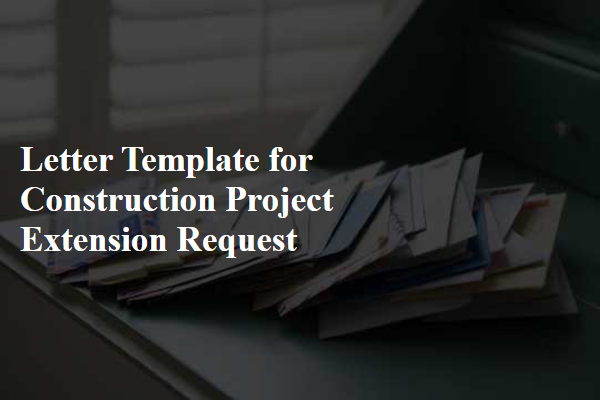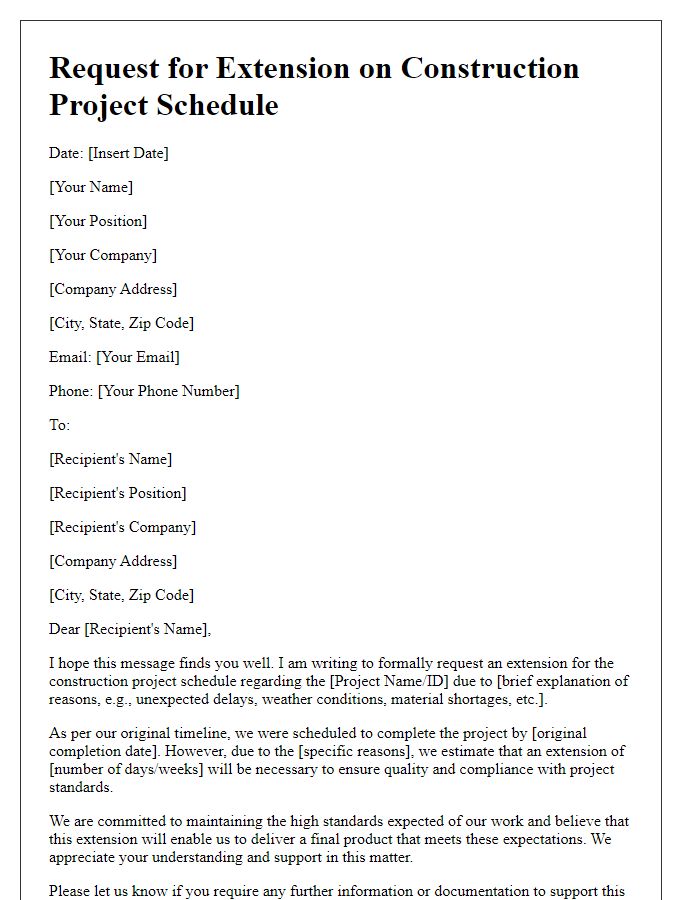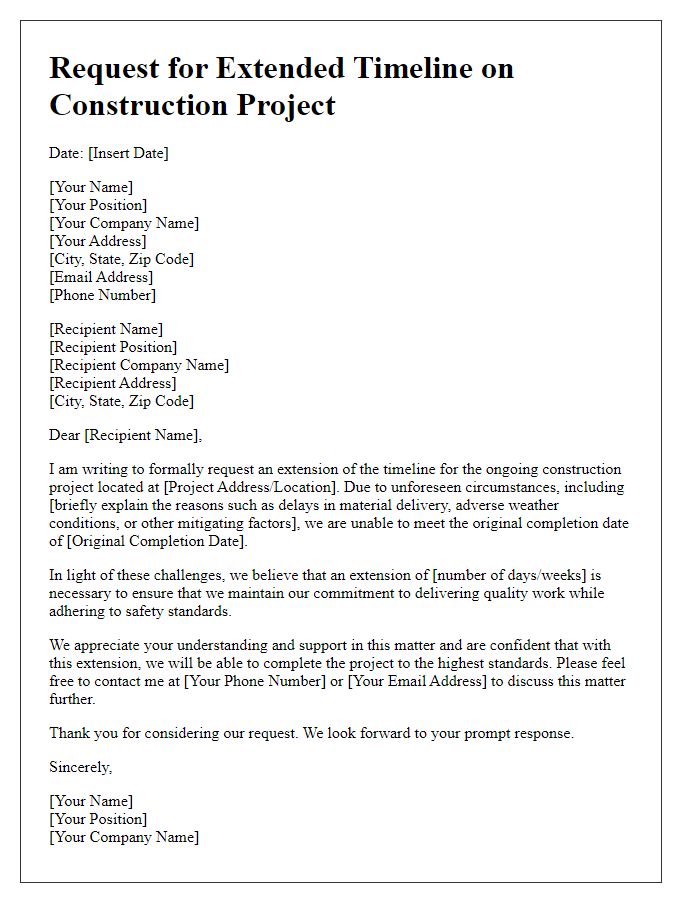Are you navigating the complexities of a construction project and finding yourself in need of an extension? You're not alone! Many contractors face unforeseen challenges that can necessitate additional time to ensure quality and compliance. In this article, we'll guide you through crafting a compelling letter template for requesting a construction project extension, making the process easier for youâso let's dive in!

Project Details and Timeline
Construction project extensions often arise due to unforeseen circumstances that impact timelines. Essential project details include the project name, location (e.g., 123 Main Street, Springfield), and the original completion date (e.g., December 31, 2023). Factors influencing the extension request may involve delayed shipments of critical materials such as concrete or steel, adverse weather conditions (like the severe storm experienced in early November), and necessary inspections that prolonged the process. Additionally, contractor availability can also play a role; for instance, if specialized subcontractors were booked due to industry demand fluctuations. Clear documentation of these elements supports the legitimacy of the extension request while emphasizing commitment to maintaining quality and safety standards throughout the construction process.
Reason for Extension
Due to unforeseen circumstances, such as unexpected adverse weather conditions (e.g., heavy rainfall caused by a tropical storm) or delays in the delivery of essential materials (e.g., shortage of steel beams from major suppliers), a formal request for an extension of the construction project timeline is necessary. These challenges have impacted our ability to adhere to the original schedule set forth in the contract dated January 15, 2023. Despite proactive measures taken to mitigate these delays, including increased workforce hours and sourcing alternative suppliers, the overall progress has been significantly hampered. An adjusted completion date of April 30, 2024, is essential to accommodate these setbacks and ensure the project at 123 Main Street achieves the expected quality and standards outlined in the contract.
Impact on Project Outcome
Construction project extensions often arise from various factors impacting the overall outcome. Unexpected events such as severe weather conditions, including rainstorms or hurricanes, can halt progress, while supply chain disruptions may delay the delivery of critical materials like steel beams or concrete. Additionally, regulatory changes or permitting issues can bring operations to a standstill. Notification of these factors must occur promptly, documenting all incidents for review. Stakeholders must understand how these delays impact timelines and budgets, emphasizing the importance of extending the project's deadline to maintain quality and ensure safety standards are met, ultimately protecting the interests of all parties involved.
Revised Schedule and Milestones
The construction project extension request necessitates a detailed outline of revised schedules and milestones. Project delays due to unforeseen circumstances such as adverse weather conditions (record rainfall noted in September 2023), material shortages (specific shortages noted for steel from suppliers), and labor availability issues (notable absentee rates in the workforce) can significantly impact timelines. New milestones should include revised completion dates for each phase of construction: foundation work expected by March 15, 2024, framing scheduled for May 20, 2024, and final inspections anticipated by July 30, 2024. A comprehensive schedule revision should reflect these adjustments, ensuring all stakeholders are aligned with the new project timeline and deliverables. This will facilitate effective communication and minimize any potential disruptions moving forward in the project.
Contact Information and Signature
In a construction project extension request, it is crucial to provide clear and organized contact information, as well as a professional signature. Essential elements include the company name, which can be a general contractor or builder, the project manager's name, and their role, such as "Project Manager" or "Site Supervisor." Next, the contact details should include a phone number, typically in the format (XXX) XXX-XXXX, an email address formatted correctly for clarity, and the physical address of the company or the site location. Following this information, a formal signature line, including the signer's name, title, and date of the request, establishes authenticity. Notably, including a company logo can enhance the professionalism of the document.
Letter Template For Construction Project Extension Request Samples
Letter template of request for extension on construction project schedule













Comments